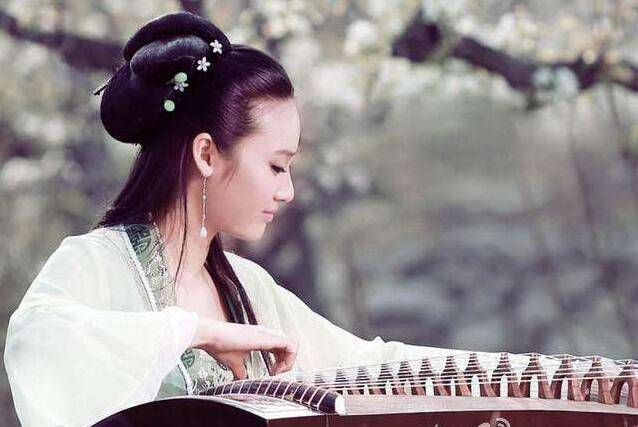The legend about the origin of guzheng
There is a legend in ancient times: The Yellow Emperor ordered Su Nu to play a fifty-stringed serpent. After listening to it, she was saddened, so she broke the serpent, and there are only twenty-five strings left. In Qin, there were two brothers arguing with each other, and the result was broken into two, and the name of the zheng was obtained from this.
Many people now believe that the zheng evolved from se. I don't know if there is any other reason for this statement besides the above legend. We find this to be somewhat dubious. Most of the forms and radicals of Chinese characters are reasonable. Take the name of our national musical instruments as an example. The bells, sickles, and money that use the word "gold" are all metal percussion instruments. The prefixes are all bamboo wind instruments, but the exceptions are the building and the zheng, which belong to percussion and playing. If according to the habits of our ancestors, if the zheng is really born out of se, then the coined character should not be the prefix of "bamboo". But why still use the "bamboo" head? When we found the relevant documents, the mystery was gradually solved.

Xu Shen's "Shuowen" in the Eastern Han Dynasty, Ying Shao's "Customs", and Du You's "Tongdian" in the Tang Dynasty agreed that the zheng is the construction of the five strings—not that it looks like a construction, but a construction. There is no such thing as a body in the above-mentioned literature. So, what material is the body made of?
According to the records of books such as "Shuowen" and "Music Zhigui", the building is made of bamboo and played with a bamboo ruler. From this point of view, the use of the prefix "bamboo" for building and zheng is completely in line with the rules of Chinese character creation. So now the zheng is so like a se, is there any relationship between it and se?
It is said that the zheng originated from construction, but its later development was deeply influenced by se. According to records, there were zither-like zithers in Bingzhou and Liangzhou during the Eastern Han Dynasty. Unfortunately, the name of the reformer was not left in history. In the Wei Dynasty, there was a record of using the camphor wood of swimming pool as a zheng. It can be inferred that the transformation of the zheng from the bamboo body to the wooden body was by no means later than the Han and Wei Dynasties. Although the zheng developed under the influence of se, and even finally replaced se's position in history; but the word "zheng" has not changed because of this. Descendants only based on the legend of "brothers fighting over selves" and the similarity in appearance of zheng and se, which led to the misunderstanding that zheng was developed from se.
Se can influence the zheng, indicating that there are reasonable factors for it, and then why was it replaced by the zheng? Isn't this an interesting historical phenomenon?
In any case, we can now clearly believe that the real immediate family of the zheng is the Tsuki, and the Se is only its collateral relative.
Involving musical instruments
Guess you like
Hot news
- 01 The handsome guy in 1997 is so advanced in pulling erhu! Netizen: Come and "wash your ears"
- 02 Dulcimer exam and performance repertoire
- 03 The Simple Difference Between Guqin, Se, and Guzheng
- 04 Pipa narrative epic -- the origin, connotation analysis and artistic charm of the famous song Sai Shang Qu
- 05 Ten Famous Yangqin Songs
 渝公网安备 50010702504639号
渝公网安备 50010702504639号